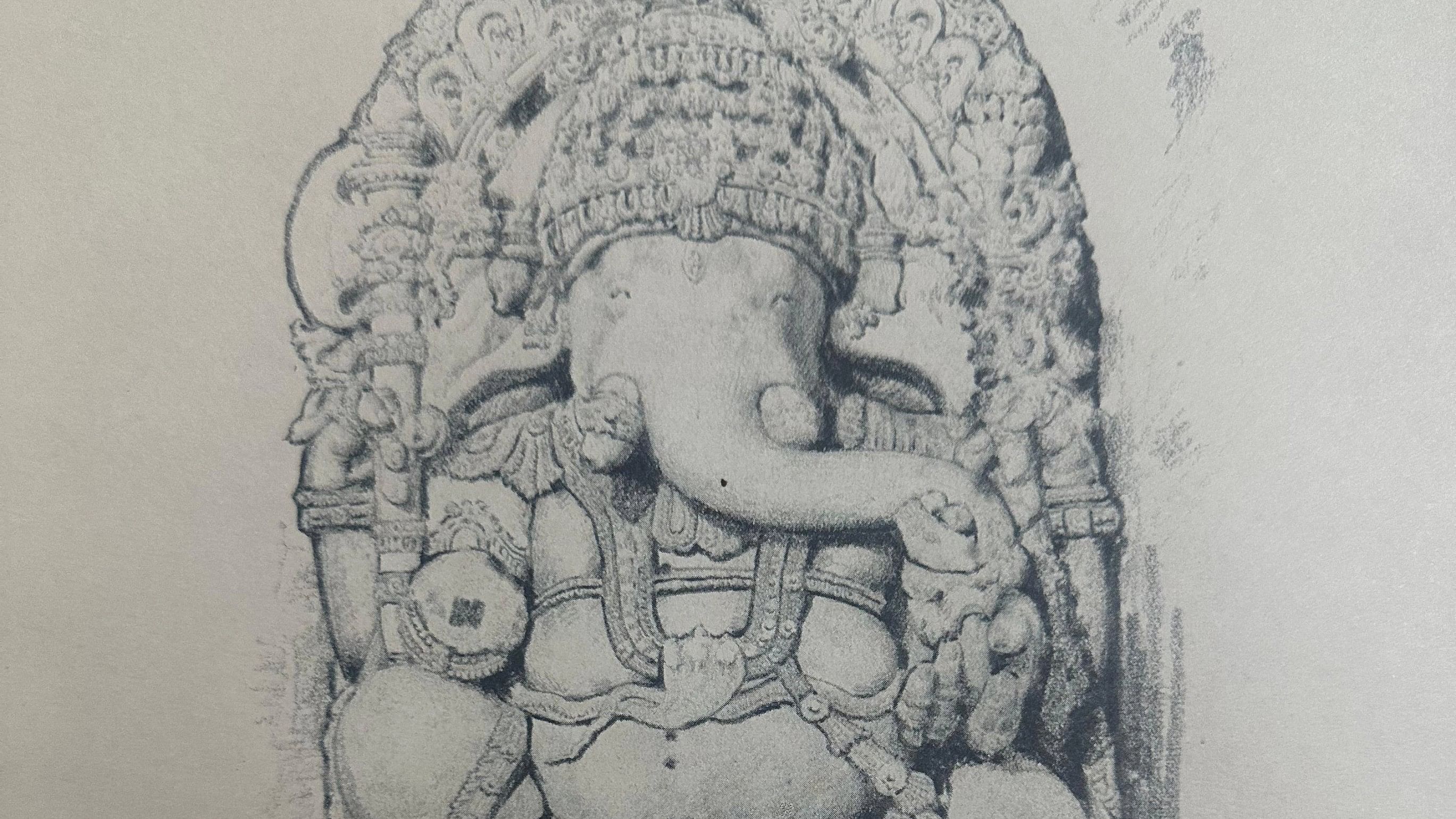
Rock-hewn idol of Ganapathi.
Credit: Special Arrangement
A Renaissance man of the erstwhile Mysore kingdom, S N Swamy’s fame and artistry continued long after Independence. Swamy was an artist who used a variety of media. He was also a Mysore Palace photographer and later, a Mysore Palace artist. In his rich career, he also worked as an art director with Dadasaheb Phalke in Prabhat Studio, Pune. Given his knowledge of the rich cultural and architectural heritage of Karnataka, he even became a director of the Karnataka State Tourism Development Corporation. In his capacity as an administrator, he was a member of Central Lalitha Kala Academy and Central Sangeet Kala Academy, New Delhi.
S N Swamy was born in 1911 in Mysore to a traditional family of artists. He was the only child of Swarnakala Nipuna Singannacharya, a master goldsmith and sculptor in the Mysore Palace. Singannacharya is best known for his work on the golden howdah and the golden throne at the Mysore Palace.
A young Swamy often accompanied his father to his work at the palace, where his grandfather, Narasimhachar, was a goldsmith and sculptor. The silver bust of Maharaja Krishna Raja Wadiyar IV in Mysore Palace was made by Swamy’s grand uncle. Growing up amidst an artistic family, he had a natural inclination towards art, especially observing his father at work and assisting him by sketching designs and creating figures. This early training made him a great artist, especially skilled in pencil sketching in his later years.
Famous works
Swamy attended Mission High School and later joined the Chamaraja Technical Institution, Mysore, in 1928. In the Fine Arts section of the Mysore Dasara Exhibition in 1931, one of Swamy’s oil paintings, titled ‘Honoured Old Age’ won second place. It was a depiction of an old lady in a red saree.
The Maharaja had observed Swamy at work at the palace. The artist had drawn a fine sketch of the Maharaja, which had received the king’s appreciation. Impressed with his talent, the Maharaja sponsored Swamy to do his Master’s in Art at Sir J J School of Art, Bombay, in 1934. At the institute, Swamy studied under the art teacher Mahadev Vishwanath Durandhar.
Swamy’s models for his oil paintings included Lord Mountbatten, Mahatma Gandhi, and Indira Gandhi, to name a few. Swamy particularly aimed to sketch world-famous personalities, and get the pieces autographed by the subjects.
Also of great renown are Swamy’s pencil sketches of well-known temple sculptures across India. Some of these were published in a collection titled “Temple Sculptures of India” by the then Mysore State Lalitha Kala Academy.
Swamy was awarded the Padma Shri in 1969 in recognition of his contribution to art.
Credit: Special Arrangement
The artist continued to paint and sketch passionately till his demise at his residence in Mysuru in 1983. But his legacy lives on, through paintings and other works of art that can be found in government offices, museums and personal collections around the world.
Sun Temple.
Credit: Special Arrangement
Emblem.
Credit: Special Arrangement
Credit: Special Arrangement
The teaching Buddha.
Credit: Special Arrangement
Credit: Special Arrangement
Attendant Elephant by S N Swamy.
Credit: Special Arrangement